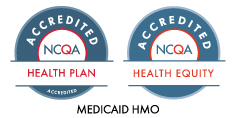Flu and RSV updates, well-check payable frequency updates
Don’t miss our Oct. 4 virtual workshop on the 2024 Care-Based Incentive (CBI) program. Register today!
What providers need to know this flu season
The Alliance has launched its annual campaign to encourage Merced, Monterey and Santa Cruz County residents to get their flu vaccine.
Please join us in encouraging Alliance members to get vaccinated. Flu vaccines are available at no cost for Alliance members.
When patients come in to get the flu vaccine, it’s also a great opportunity to encourage them to get the updated COVID-19 vaccine and any other vaccines due.
Where can Alliance members get flu vaccines?
Adults can get a flu vaccine at:
- A local pharmacy.
- A flu vaccine clinic.
- Their primary doctor’s office.
Children and adolescents under age 19 need to get the flu vaccine at their doctor’s office. Members can get a flu vaccine from a provider they are not currently linked to – no referral is needed. If members can’t get in to see their doctor, local health departments may also be offering flu vaccine clinics.
Flu shots will be available for Merced County members at the Merced Community Health Fair on Oct. 8, 2023. Find more information on our website.
Providers can get information about this flu season on the CDC website. More information for members is available at www.thealliance.health/flu. You can also distribute our flu flyer for members in English, Spanish and Hmong.
Flu incentive for members
Alliance members with children ages 7 to 24 months who get their two flu vaccine doses between September and May will be entered into a monthly raffle for a $100 Target gift card.
Flu season coding updates
Coding updates for the 2023-24 flu season are available on our website.
Prepare for rising RSV cases
In anticipation of the onset of the 2023-2024 RSV season, the CDC is encouraging clinicians to prepare to implement new RSV prevention options.
RSV transmission occurs primarily through:
- Respiratory droplets (coughs or sneezes).
- Direct contact with a contaminated surface.
Infants, young children and older adults—especially those with chronic medical conditions—are at increased risk of severe disease from RSV infection. It most commonly causes an upper respiratory-like illness, but can also cause severe lower respiratory infections like bronchiolitis and pneumonia.
Prevention Options
Although treatment for RSV is limited to symptomatic care, monoclonal antibody products are becoming available to help prevent patients from getting seriously ill from RSV.
Nirsevimab
Nirsevimab (BeyfortusTM, Sanofi and AstraZeneca) is a new long-acting monoclonal antibody that we believe will be available through the Vaccines for Children program (VFC) this RSV season. The American Academy of Pediatrics (AAP) recommends administration to:
- All infants under 8 months of age entering their first RSV season.
- Children aged 8 through 19 months who are at increased risk of severe RSV infection.
More information:
- News Release: American Academy of Pediatrics Recommends Medication to Prevent RSV Be Given to All Infants and Urges Equitable Access
- ACIP and AAP Recommendations for the Use of the Monoclonal Antibody Nirsevimab for the Prevention of RSV Disease
Palivizumab
Palivizumab (Synagis®) is a shorter acting monoclonal antibody that has been recommended by the American Academy of Pediatrics (AAP) for administration to select high risk infants in the first year of life and some toddlers in the second year of life during the RSV season.
Administration should begin in November and be administered monthly for 5 consecutive months. The recommendations by the AAP remain to provide palivizumab to the targeted high-risk population if nirsevimab is not yet available this RSV season.
Providers who wish to administer Synagis in their office are required to submit the Statement of Medical Necessity along with the prior authorization request.
Vaccinating older adults
Two new vaccines are available to protect adults 60 years and older from severe RSV disease:
- RSVPreF3 (Arexvy, GSK).
- RSVpreF (AbrysvoTM, Pfizer).
What to do in case of RSV symptoms
Healthcare personnel, childcare providers and staff at long-term care facilities should stay home and not go to work when they have fever or symptoms of respiratory infection.
Find more information about RSV on the CDC website.
Payable frequency updates: well-child visits up to 3 years old
The Alliance has recently expanded the payable frequency for billing well-child visits through the member’s second year of birth. This update allows catch-up for well-care visits.
Please reference the table below for CPT codes by age and payable frequency for new and established patients.
New patients are defined as either a member who has never been seen before or has not been seen in the same clinic group/specialty within the last three years.
Well-Care Frequency
New patient
| CPT Code | CPT Description | Payable Frequency |
| 99381-99385 | Periodic Comprehensive Preventive Medicine | Every 36 months |
Established patient
| CPT Code | CPT Description | Payable Frequency |
| 99391 | Periodic Comprehensive Preventive Medicine 0-12 months |
Every 14 days |
| 99392 | Periodic Comprehensive Preventive Medicine 12-23 months |
Every 14 days |
| Periodic Comprehensive Preventive Medicine 24-35 months |
Every 14 days | |
| Periodic Comprehensive Preventive Medicine 3-4 years |
Every 180 days | |
| 99393 | Periodic Comprehensive Preventive Medicine 5-11 years |
Every 180 days |
| 99394 | Periodic Comprehensive Preventive Medicine 12-17 years |
Every 180 days |
| 99395 | Periodic Comprehensive Preventive Medicine 18-39 years |
Every 12 months |
Best practices
- Use the Bright Futures periodicity schedule for well-care intervals.
- Before the visit, have medical assistants identify any needed immunizations and screenings, and if well-care catch-up visits are needed.
- Create pending orders in the EHR for each immunization due during every visit, which act as reminders. Clinicians must manually uncheck the immunization order during each visit if they can’t provide the vaccination due.
- Convert acute visits (episodic and sick visits) into well-visits to increase preventive services and immunizations.
- Schedule the next well-care visits before the member leaves.
- Summarize what will be covered at the next visit to encourage parents to keep children on schedule for necessary visits.
Thank you for partnering with us to increase well-care visits and support our vision of Healthy People, Healthy Communities!



